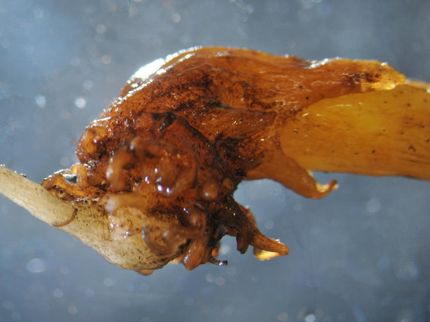New genetic cause discovered for photosensitive blood disorder
Researchers from BWH have uncovered a new genetic cause for erythropoietic protoporphyria (EPP), a photosensitive blood disorder. In the past, the most well-known causes for EPP were two specific genetic disorders, but using an extended pedigree from France, the investigators found that EPP can also be caused by changes in another gene. Principal investigator, Barry Paw, MD, PhD, of the Divisions of Newborn medicine and hematology, and his team and international collaborators describe a mechanism through which a mutation in the gene CLPX results in a functional defect that causes excess porphyrin, the protein in red blood cells, and ultimately intermediates and contributes to EPP.
The research team initially identified a family from Northern France in which the proband, or starting point for the genetic study of the family, suffered from EPP of unknown cause. The data collected from the proband indicated that she was affected by an unusual form of EPP. Among the proband's family members, only her father and uncle presented with indicators associated with mild photosensitivity but showed no clinical symptoms of EPP.
CLPX is a gene that controls mitochondrial unfoldase, an enzyme that carries out a balancing step in actively unfolds selected proteins for "protein quality control" during heme biosynthesis by catalytically activating the rate-limiting step enzyme, ALAS, or degrading ALAS protein. Researchers found that a dominant mutation in CLPX inherited by members of this family reduced the degradation associated with one of its target proteins, ALAS, which subsequently led to the accumulation of protoporphyrin IX (PPIX). Abnormal accumulation of PPIX is known to lead to EPP.
Past research by the team showed that there are several genes promoting PPIX overproduction and EPP including mitochondrial AAA+ unfoldase and ClpX. The current findings identify yet another gene promoting EPP and continue to expand the complex gene network that contributes to heme metabolism disorders.
"It is our hope that further understanding of the complex network of enzyme and cofactor interactions controlling heme synthesis will continue to contribute ideas for therapeutic strategies to treat diseases caused by aberrant regulation of heme metabolism," the authors write.
Original publication
Yvette Y. Yien, Sarah Ducamp, Lisa N. van der Vorm, Julia R. Kardon, Hana Manceau, Caroline Kannengiesser, Hector A. Bergonia, Martin D. Kafina, Zoubida Karim, Laurent Gouya, Tania A. Baker, Hervé Puy, John D. Phillips, Gaël Nicolas, and Barry H. Paw; "Mutation in human CLPX elevates levels of δ-aminolevulinate synthase and protoporphyrin IX to promote erythropoietic protoporphyria"; PNAS; 2017
Original publication
Yvette Y. Yien, Sarah Ducamp, Lisa N. van der Vorm, Julia R. Kardon, Hana Manceau, Caroline Kannengiesser, Hector A. Bergonia, Martin D. Kafina, Zoubida Karim, Laurent Gouya, Tania A. Baker, Hervé Puy, John D. Phillips, Gaël Nicolas, and Barry H. Paw; "Mutation in human CLPX elevates levels of δ-aminolevulinate synthase and protoporphyrin IX to promote erythropoietic protoporphyria"; PNAS; 2017
Topics
Organizations
Other news from the department science

Get the life science industry in your inbox
By submitting this form you agree that LUMITOS AG will send you the newsletter(s) selected above by email. Your data will not be passed on to third parties. Your data will be stored and processed in accordance with our data protection regulations. LUMITOS may contact you by email for the purpose of advertising or market and opinion surveys. You can revoke your consent at any time without giving reasons to LUMITOS AG, Ernst-Augustin-Str. 2, 12489 Berlin, Germany or by e-mail at revoke@lumitos.com with effect for the future. In addition, each email contains a link to unsubscribe from the corresponding newsletter.


















































